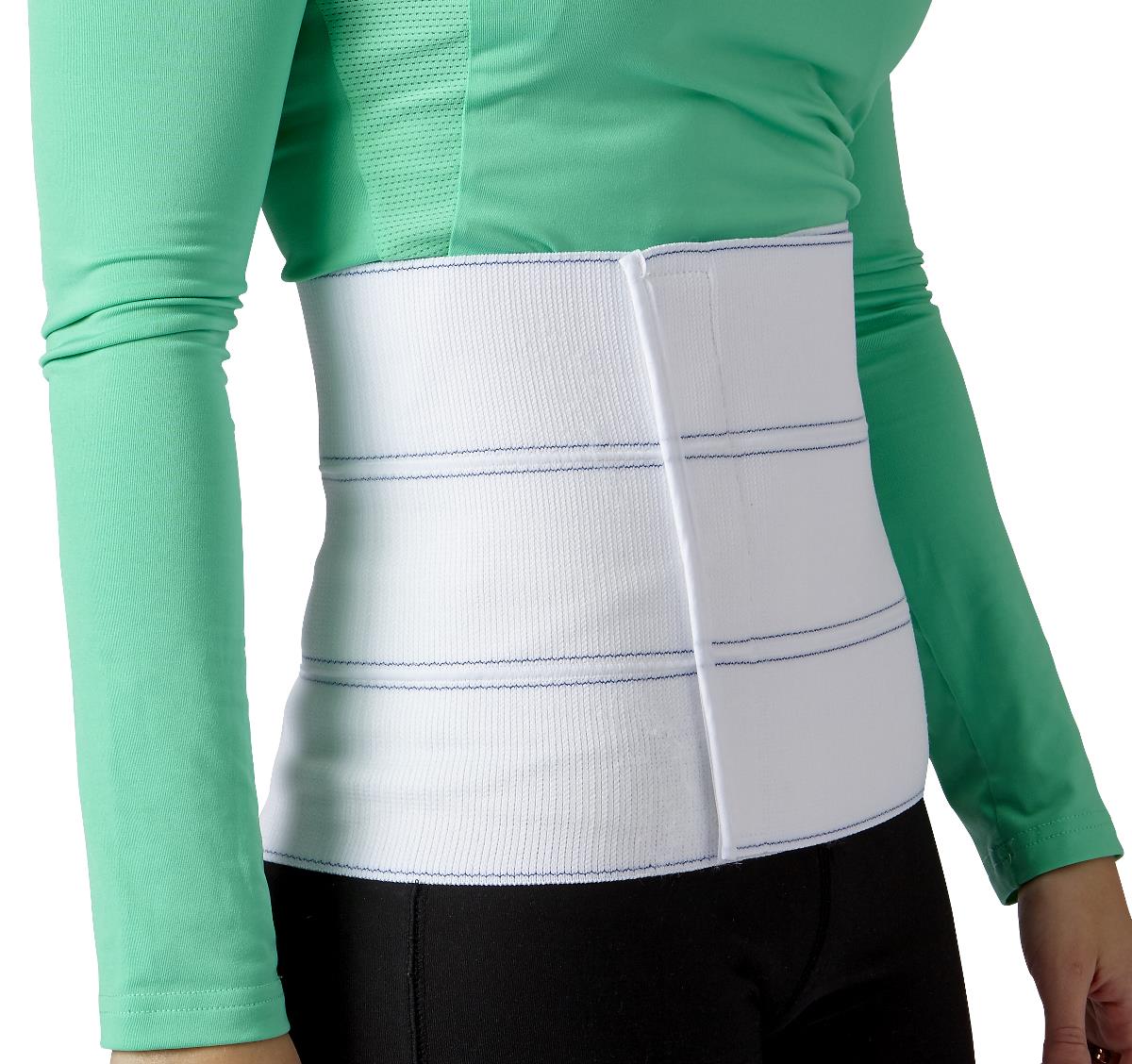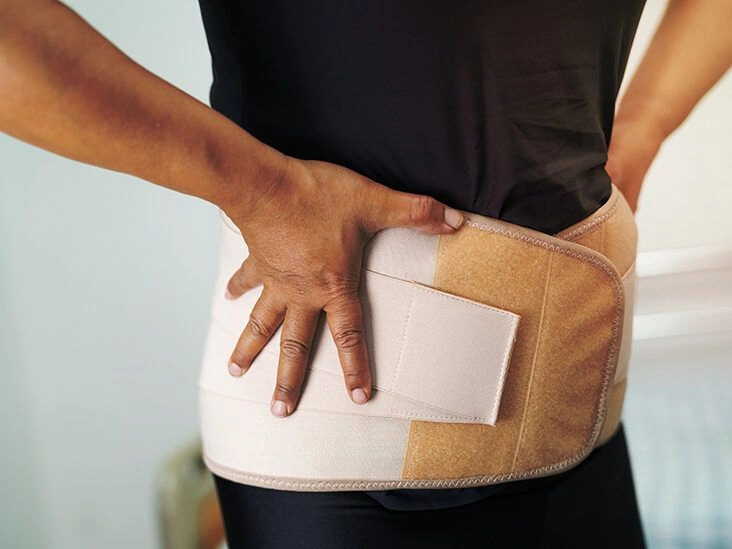An abdominal binder is a broad compression band that wraps around the midsection. It’s often used to help accelerate recovery following abdominal operations.
Abdominal binders are available in various diameters and lengths. Most are constructed from stretchable fabric and fasten with Velcro or hook-and-loop closures. Some models include extra lumbar support, while others incorporate straps to secure surgical drainage tubing.
Your physician may suggest using an abdominal binder after:
- a cesarean delivery
- bariatric procedures
- an exploratory laparotomy
- a hysterectomy
- abdominoplasty (tummy tuck)
- spinal surgery
When positioned correctly, an abdominal binder can also be applied in people with spinal cord injuries to:
- support the abdominal area
- preserve intra-abdominal pressure
- enhance breathing mechanics
The advantages of wearing an abdominal binder
Advantages
- Using an abdominal binder may lessen pain after surgery.
- It may also reduce psychological distress following the operation.
- Binders can encourage deeper breathing.
Following an operation, an abdominal binder is believed to:
- support the surgical incision
- alleviate discomfort
- encourage earlier mobilization
- decrease swelling
High-quality evidence on abdominal binders is limited. A 2014 systematic review reported that binders may reduce early postoperative pain and lower psychological distress.

There is some indication that abdominal binders may facilitate coughing and deeper breaths after surgery and improve general mobility.
Additional studies are required to conclusively determine whether binders prevent fluid collections (seromas) after abdominal operations or significantly enhance long-term physical function.
After a hysterectomy, using an abdominal binder may:
- approximate the abdominal muscles to reduce pain
- boost circulation at the incision site to aid healing and lessen swelling
- make physical activity more comfortable
- assist in strengthening the abdominal musculature
What the evidence indicates
A 2010 study indicated that abdominal binders should be considered a first-line measure for people who experience pronounced drops in blood pressure upon standing, a condition called orthostatic intolerance (OI).
Research demonstrated that applying abdominal compression in people with OI helped prevent blood from pooling in the abdomen.
Wearing an abdominal binder was associated with an increase in standing systolic pressure by about 11 mmHg and diastolic pressure by about 6 mmHg. For comparison, the anti-gravity suits used by aviators to prevent fainting produce a comparable effect on blood pressure.
If you have OI, an abdominal binder might be a rapid and effective nonpharmacologic option. Many drugs used to treat OI have undesirable side effects.
Some individuals wear an abdominal binder to support their core during everyday tasks or heavy lifting. Women sometimes use binders after vaginal childbirth believing they help the uterus contract and assist with postpartum shape recovery.
However, there’s no robust scientific support that girdling the abdomen will return you to pre-pregnancy clothing any faster.
How to wear an abdominal binder
You may awaken from anesthesia with an abdominal binder already in place after abdominal surgery. Depending on the procedure, you might wear a binder for up to six weeks or for the entire recovery period.
As healing progresses, your clinician may advise gradually reducing wear time.
Abdominal binders are available at most pharmacies and medical supply retailers. Selecting the correct size is important.
To size a binder, measure the widest area that the binder will cover. For women this is commonly the hips; for men it’s often the waist.
Position the binder around your abdomen beneath your clothing with the fastenings at the front. Ensure it is snug but not overly tight. You should still be able to breathe comfortably.
Keep the binder dry and clean. If it becomes soiled or damp it may irritate skin or increase infection risk. Most binders can be spot-cleaned and air-dried—follow the manufacturer’s care instructions.
Risks and precautions
Risks
- Compression near a surgical wound can be uncomfortable.
- Some people may find breathing awkward while wearing a binder.
- These devices can irritate the skin.
Abdominal binders are generally tolerated well, though some find them hot or uncomfortable. Although intended to relieve pain, compression around an incision can sometimes increase discomfort.
They may also make breathing feel more difficult, but there’s no clear evidence that binders cause or worsen respiratory disorders.
Compression garments can provoke allergic reactions, itching, rash, or other skin irritation. To reduce the likelihood, choose a properly fitting binder made from hypoallergenic materials.
There is ongoing discussion about whether abdominal binders raise the risk of deep vein thrombosis (DVT). DVT involves formation of a clot in a deep vein. A 2007 study showed that binders increase intra-abdominal pressure, which could theoretically be linked to DVT risk.
Because abdominal surgery itself elevates DVT risk, some have questioned the routine use of binders postoperatively.
Conversely, immobility after surgery is a major DVT risk factor. In that sense, binders that facilitate earlier activity might actually lower DVT risk.
The takeaway
When used appropriately, an abdominal binder can assist recovery after abdominal surgery. It may also support core muscles and reduce symptoms of orthostatic intolerance. If prescribed by your doctor, the cost of a binder may be covered by medical insurance.
If you’re scheduled for abdominal surgery, discuss with your surgeon whether a binder is recommended. If you expect to receive one, consider obtaining it beforehand and bringing it on the day of the procedure.
Follow your clinician’s instructions on wear duration. Notify your doctor if you observe redness, warmth, or unusual swelling near your incision. If you have concerns about fit or experience side effects, contact your healthcare provider.


















Leave a Reply
You must be logged in to post a comment.